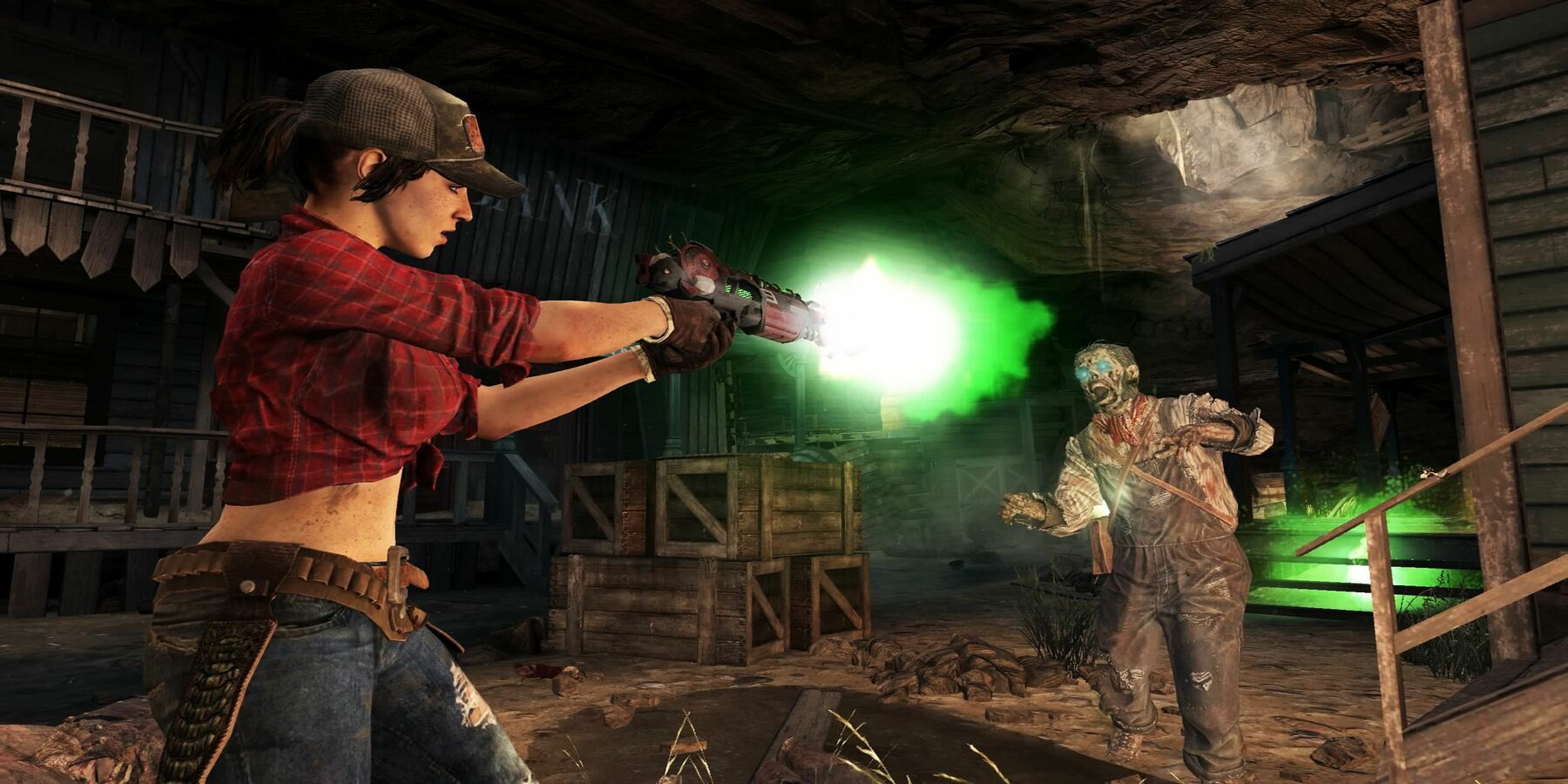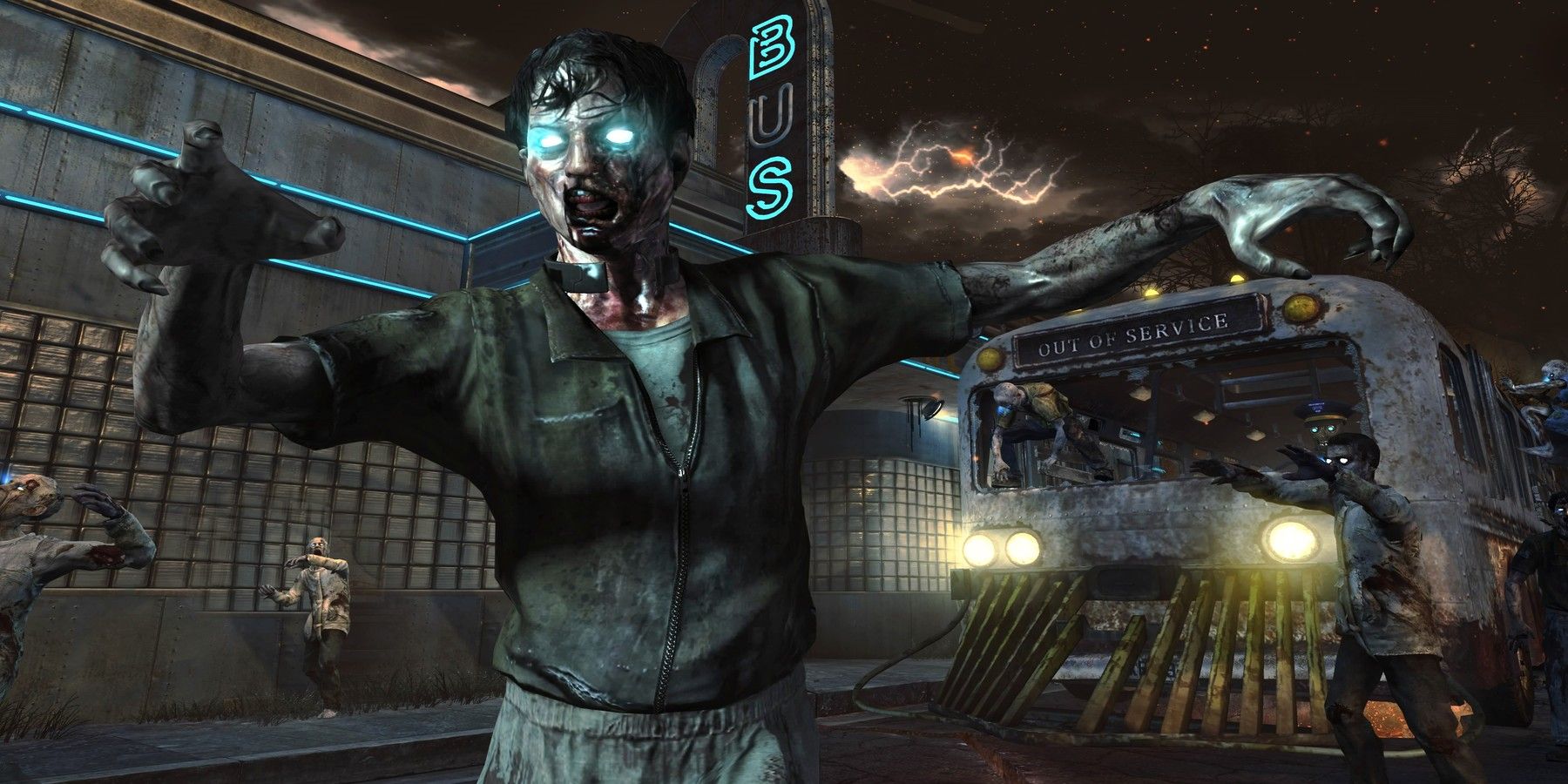Call of Duty Zombies has experimented with numerous concepts over the years. While some attempts at trying something fresh do not work out, such as what was seen with Call of Duty: Vanguard Zombies, other tries to innovate result in mechanics that become integral to the foundation of Zombies. The craftable items and more complex map design seen in Black Ops 2 are just a few examples of a new idea working out and becoming something that is expected from future maps.
These were hardly the only things that 2012’s Call of Duty Zombies mode tested out, though. While the nav cards are an example of a failed plan, fans are more neutral on concepts like the bank and weapon storage. Grief has become a cult classic, too. However, out of everything that Treyarch introduced to Call of Duty: Black Ops 2 Zombies but did not use in its later games, Persistent Perks are perhaps the most deserving of a comeback.
Call of Duty Zombies’ Persistent Perks Had Potential
Persistent Perks in Call of Duty: Black Ops 2 Zombies were comparable to the Black Ops 2 Zombies ranking system in the sense that they were cool but poorly explained. However, this made more sense for the Perma-Perks, as part of the fun was the community coming together to discover how to obtain and lose the special effects. These buffs ranged from useless to game changing, and they would be fun to see again.
Examples of Perma-Perks include super Juggernog, Tombstone, and PhD Flopper, with extra hesdshot damage and steel barricades being other examples of these special effects. Players could obtain or lose these abilities by doing certain things in game, adding a fair bit of depth to the system. For instance, red insta-kill or insta-kill pro gave players invincibility, ensuring that any enemy that touched them for the first half of an insta-kill’s runtime would die. To get this Persistent Perk, players needed to not kill any Zombies during two insta-kills. To lose it, they had to take damage while an insta-kill was active.
These upgrades added another layer to gameplay, as players were able to work toward obtaining and keeping the persistent perks that they wanted. They could ignore steel barriers if they did not want it, focusing on keeping the perk refund Perma-Perk instead. These fourteen hidden abilities were also a fun way to showcase someone’s expertise in-game, with more experienced Call of Duty Zombies players able to teach newcomers how the secret system worked.
As for why persistent perks were left behind, it likely has to do with all the other systems Treyarch introduced in the later modes. Gobblegum in Black Ops 3, for example, was extremely strong on its own. Combining this feature with persistent perks could have made players ridiculously overpowered, removing any kind of challenge from the mode. With specialist weapons in Call of Duty: Black Ops 4 and Field Upgrades in Call of Duty: Black Ops Cold War, the mode became even easier.
While it remains to be seen if the standalone Zombies game or Zombies Chronicles 2 will actually happen, both could provide an opportunity to bring back Perma-Perks. The former being a Zombies-only release would give Treyarch all the resources it needs to add complex systems to the mix. As for the latter, it would supposedly bring back TranZit, Die Rise, and Buried, the maps that used the Persistent Perk system. With Perma-Perks rewarding skilled and knowledgeable Call of Duty Zombies players, but not negatively impacting the game for more casual fans, the system is something that should absolutely reappear in the future.


